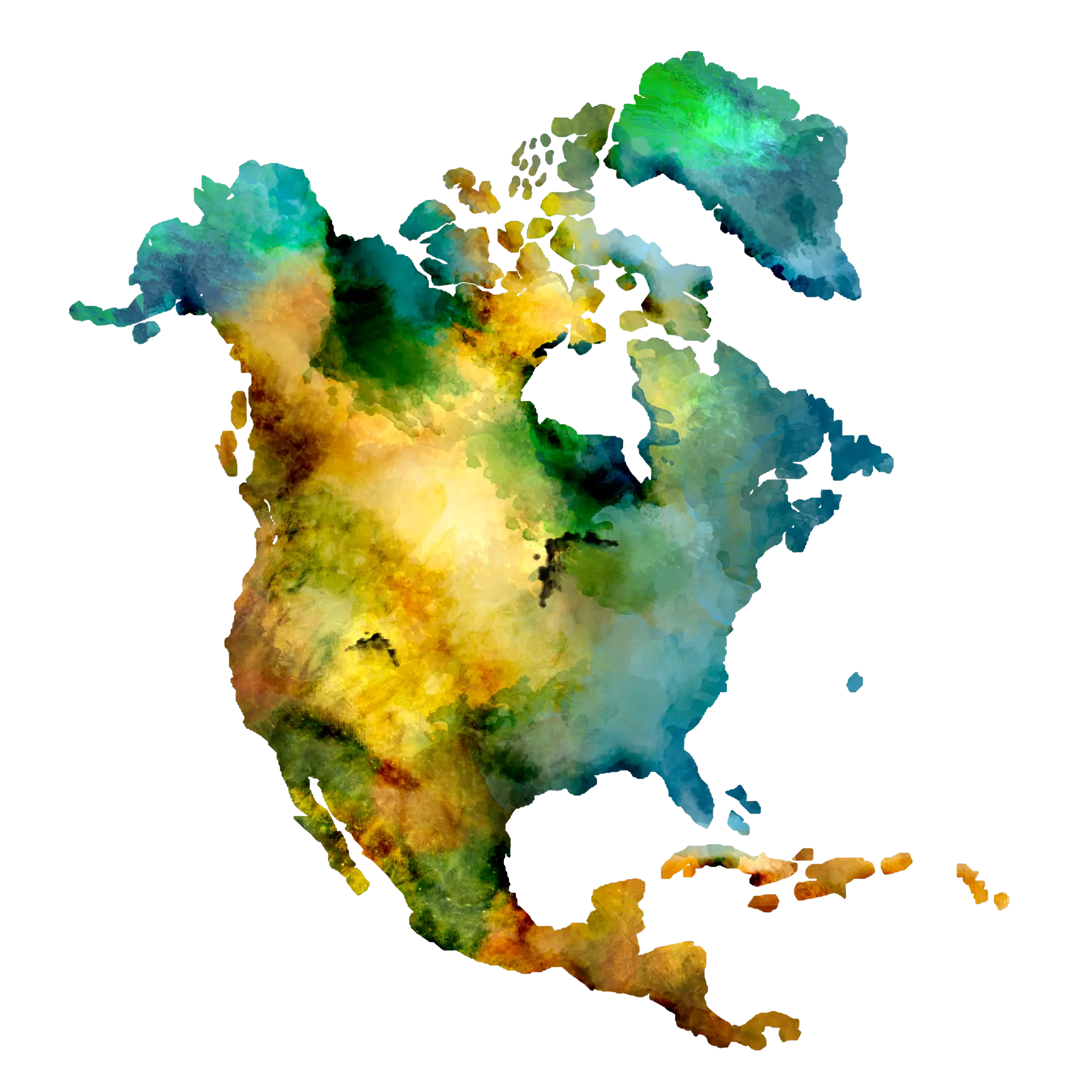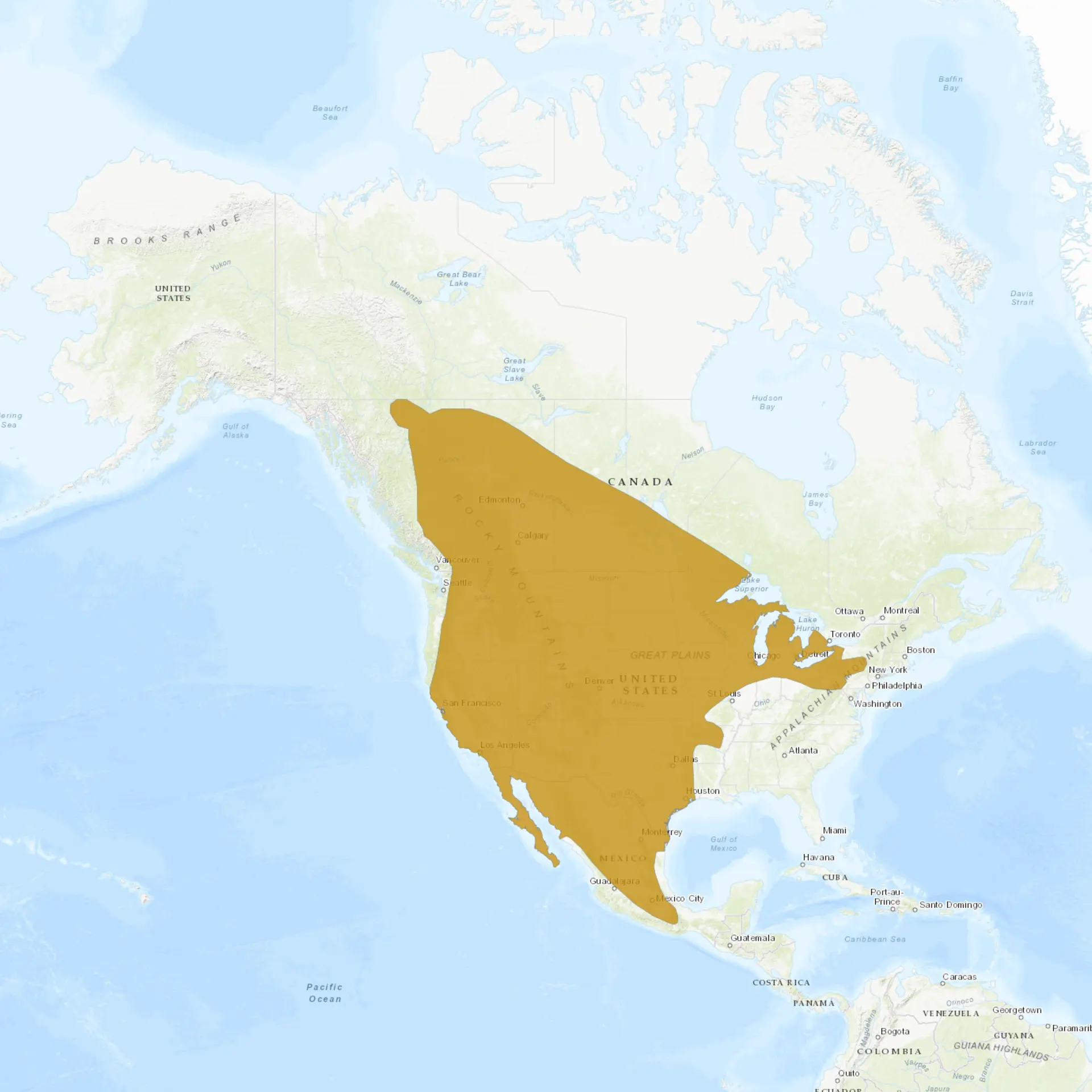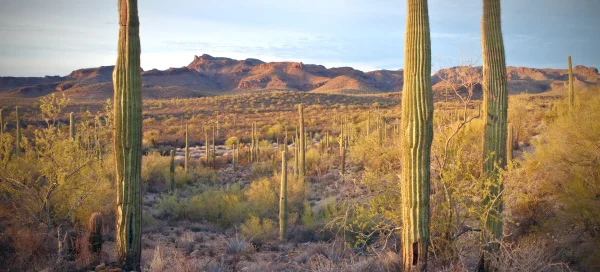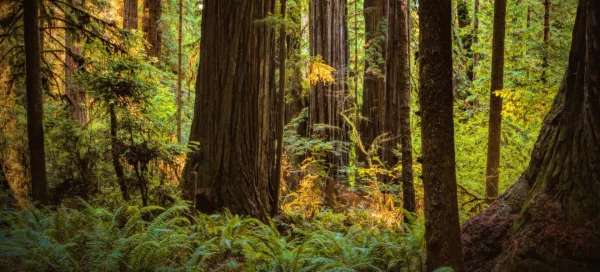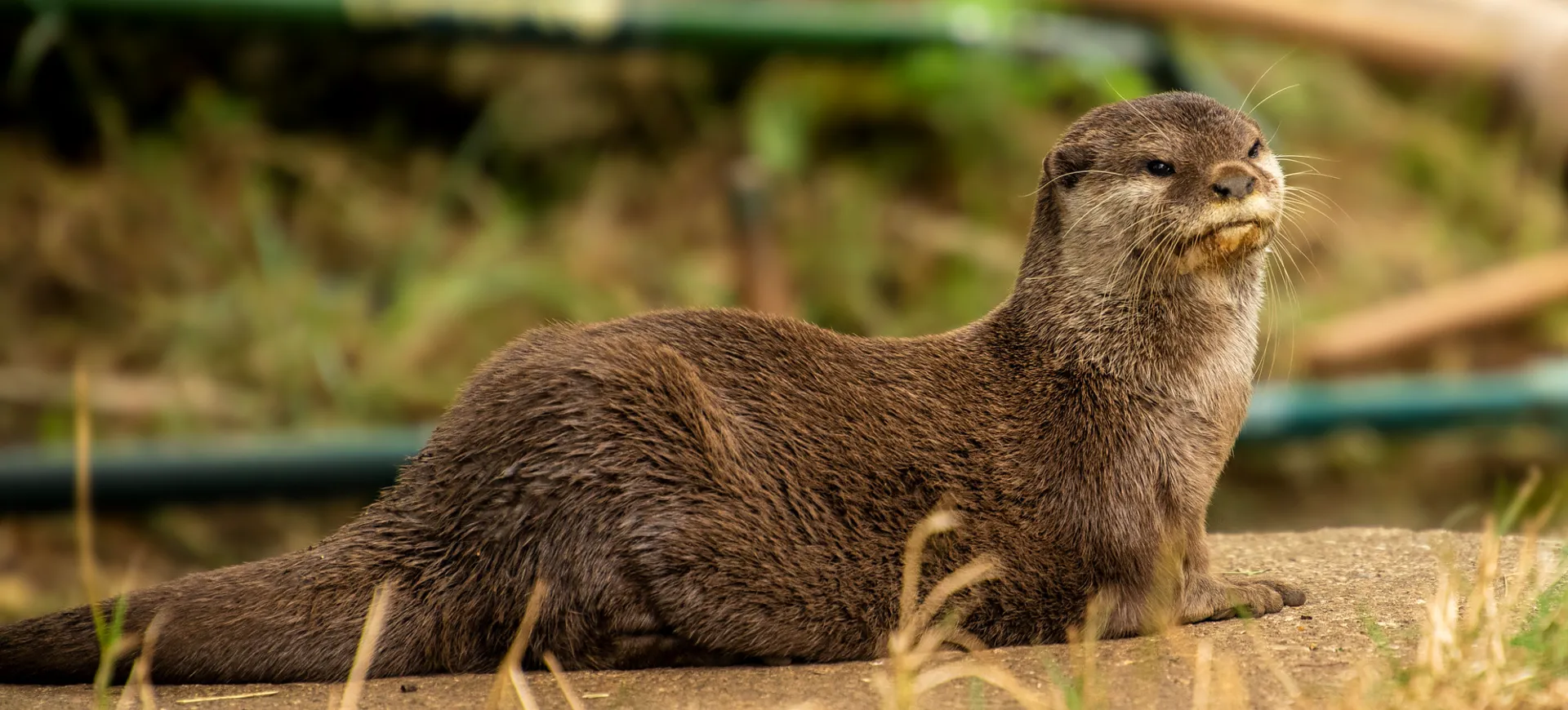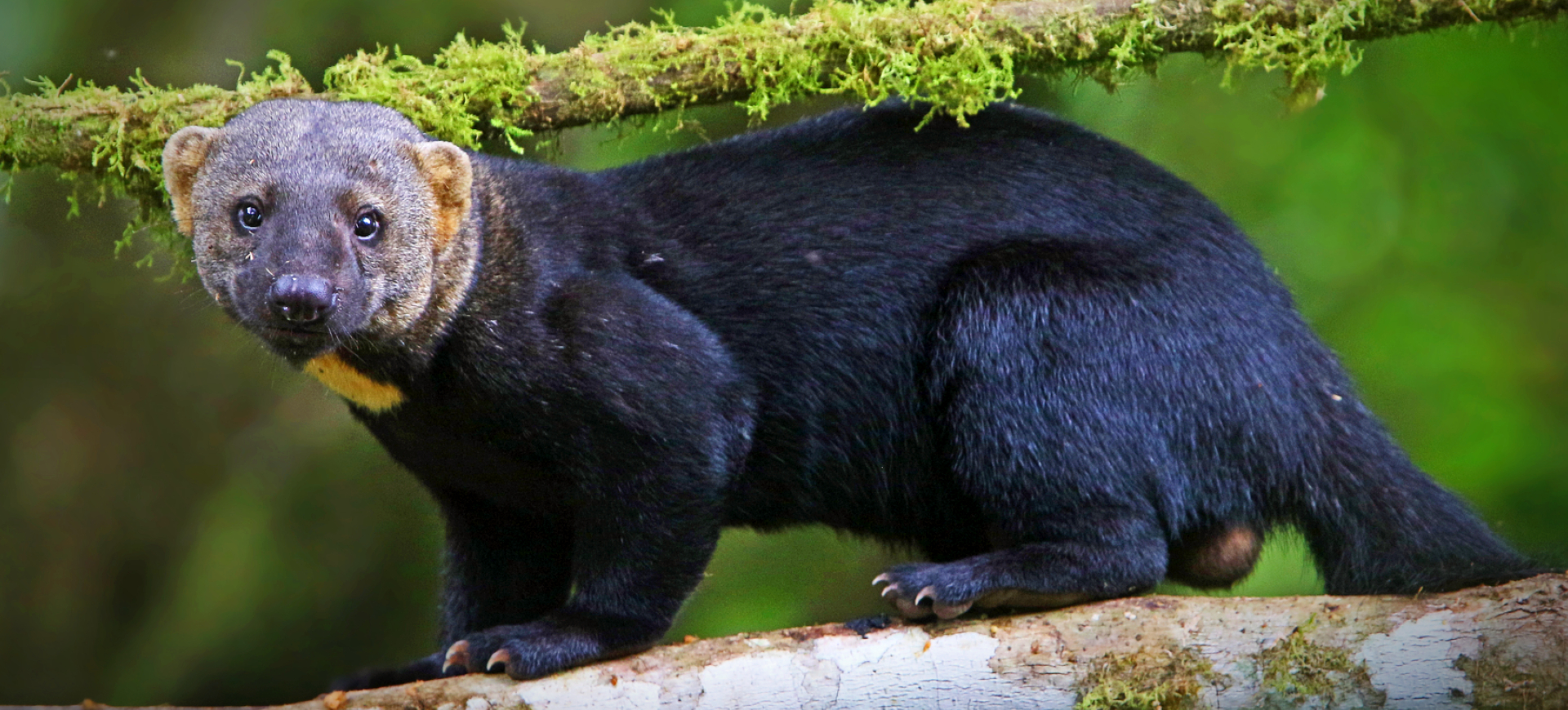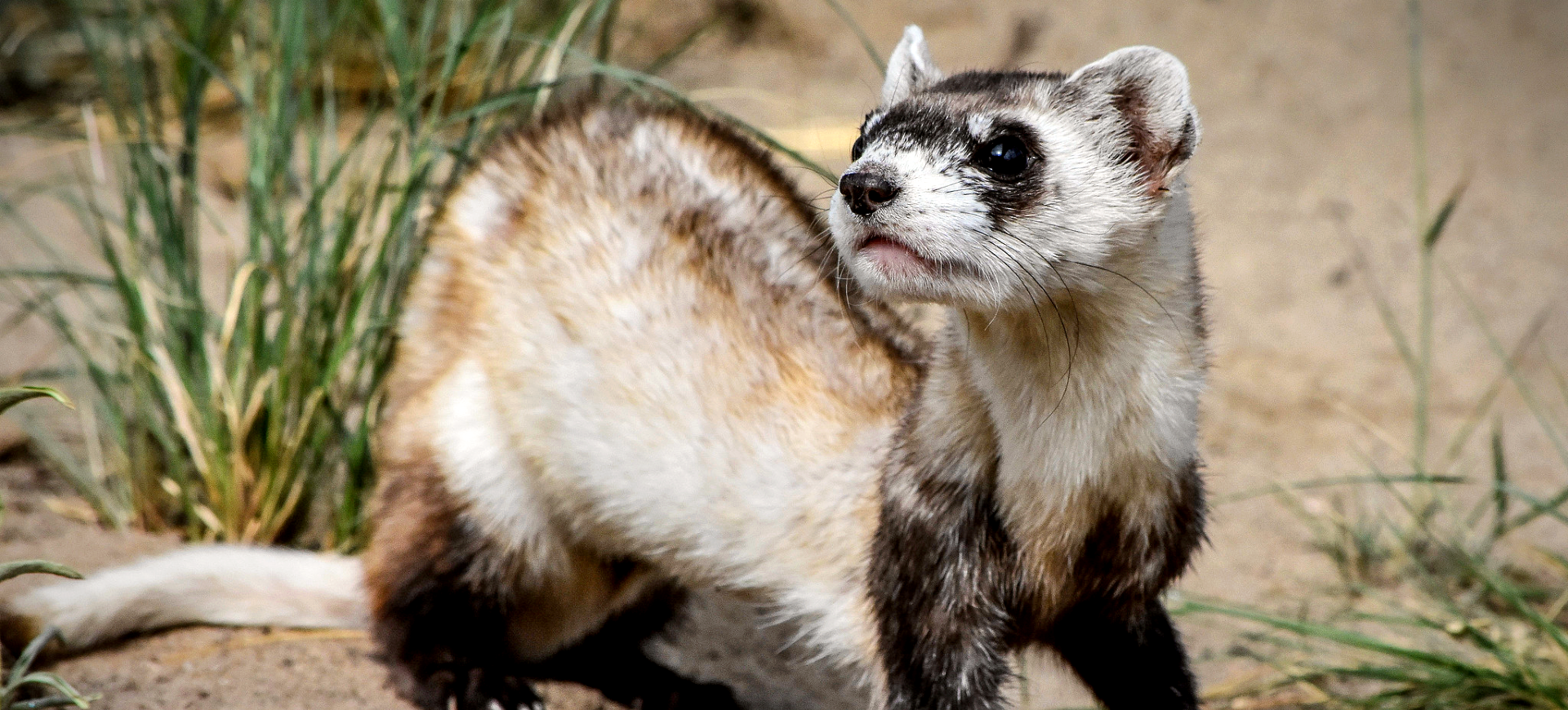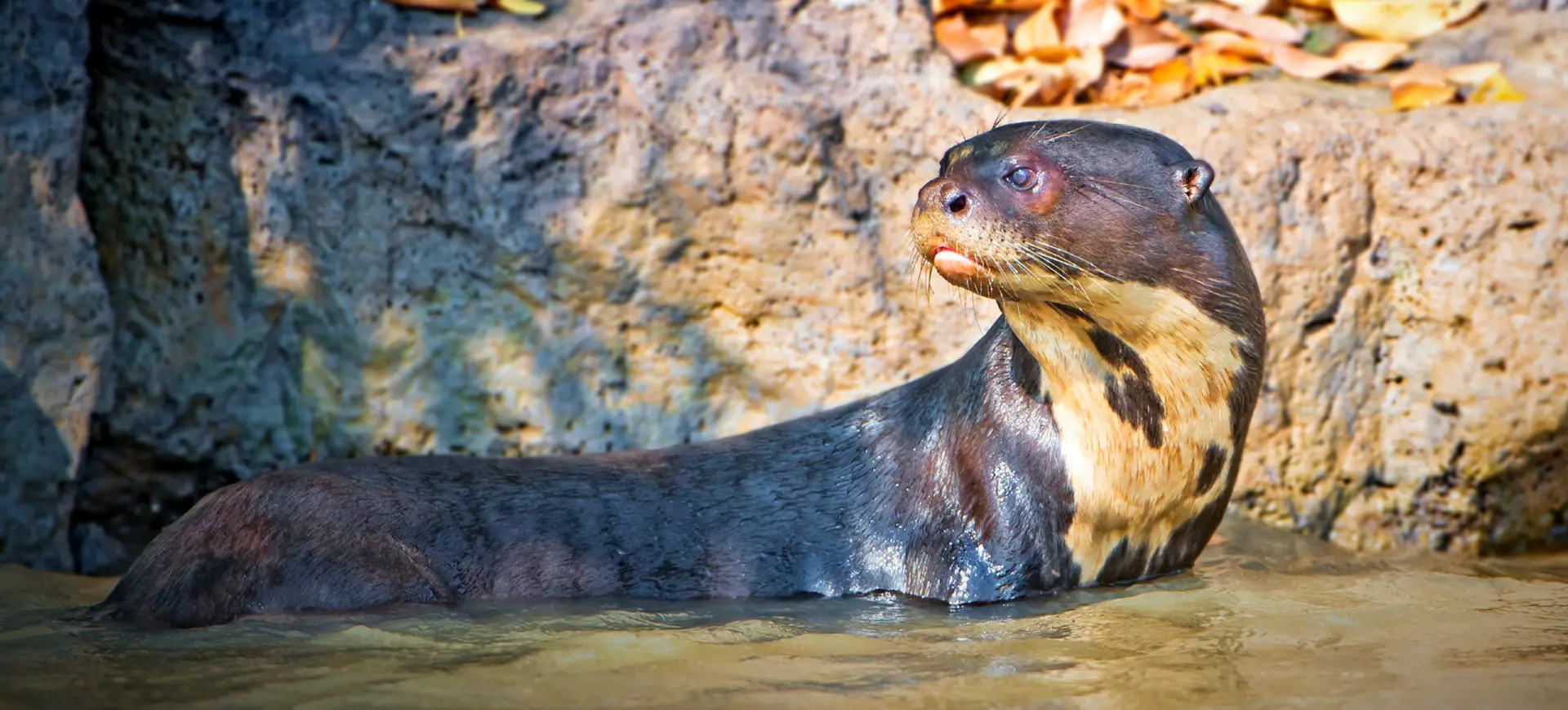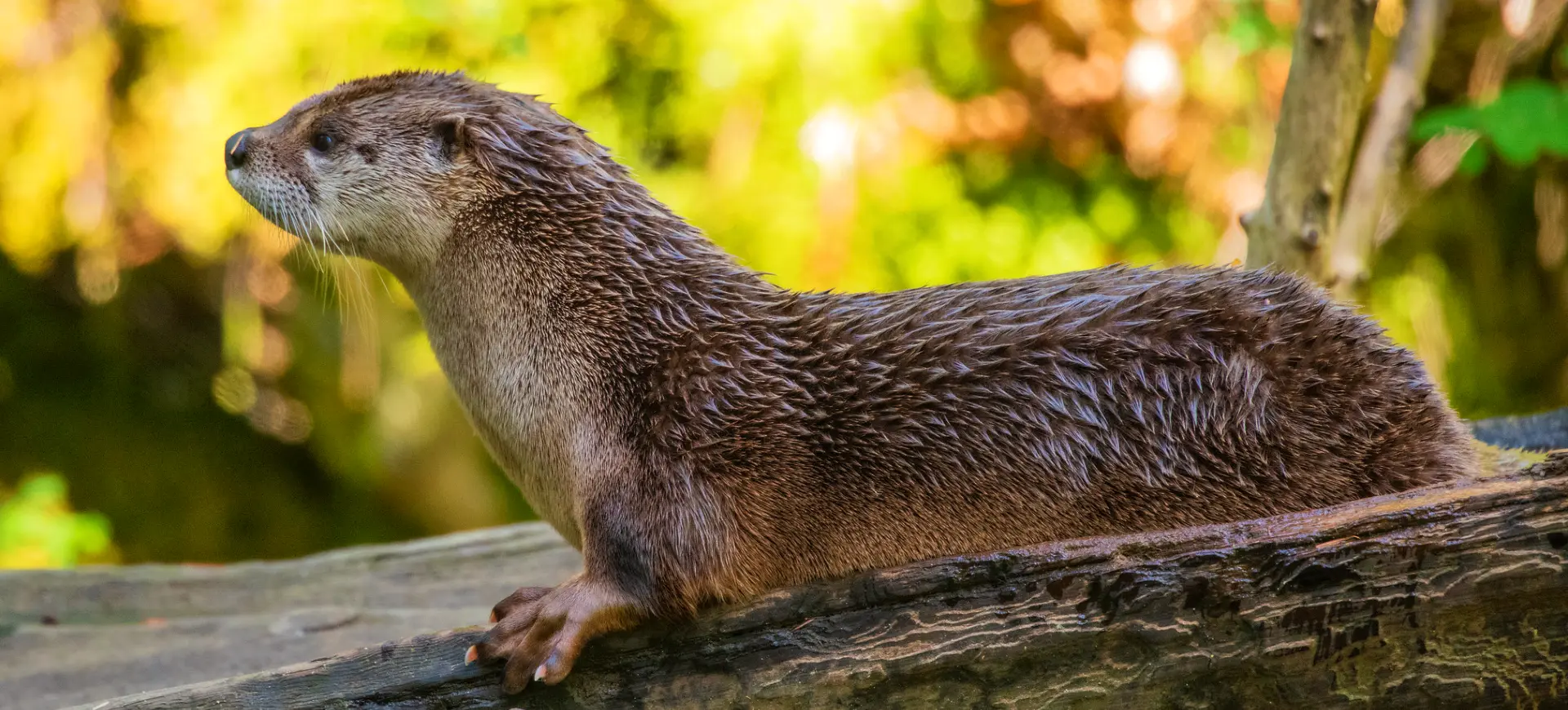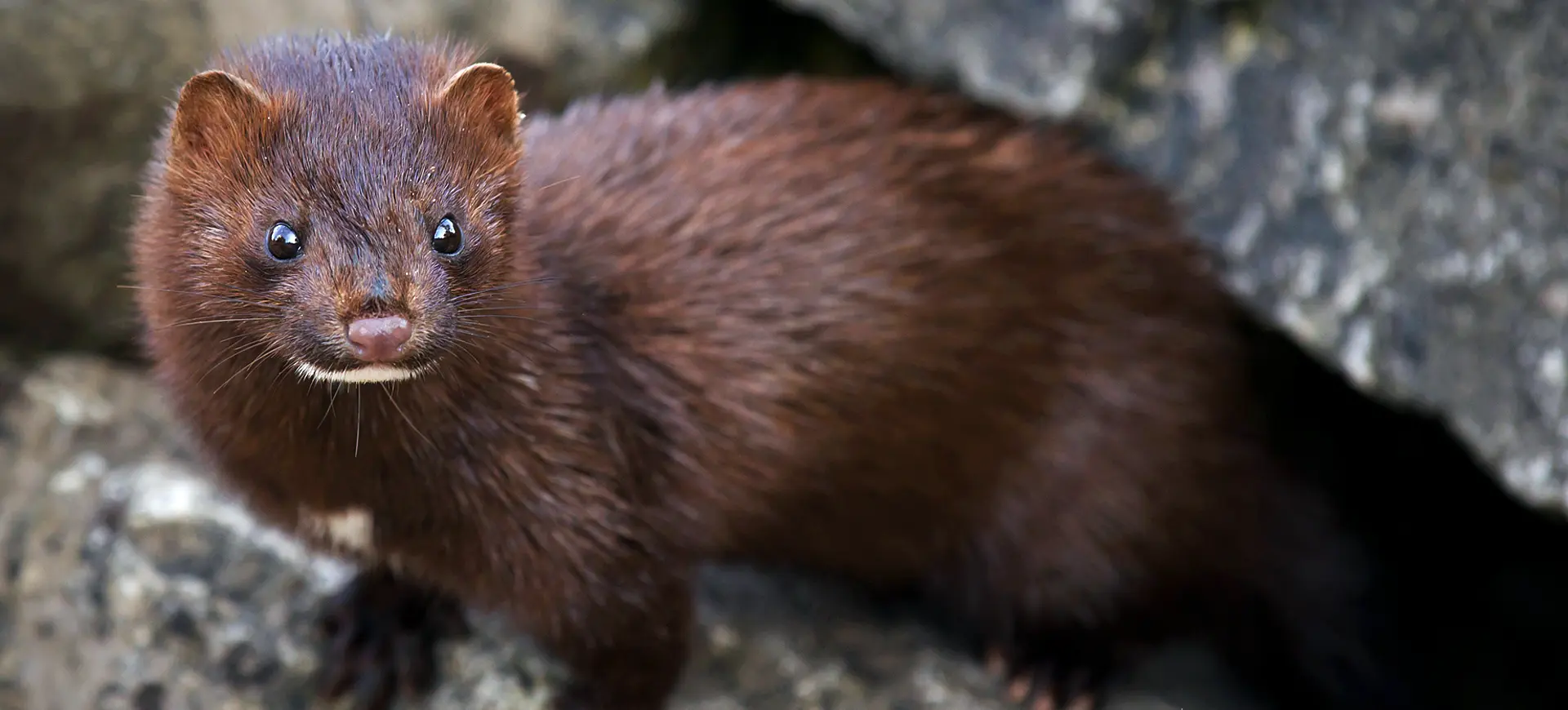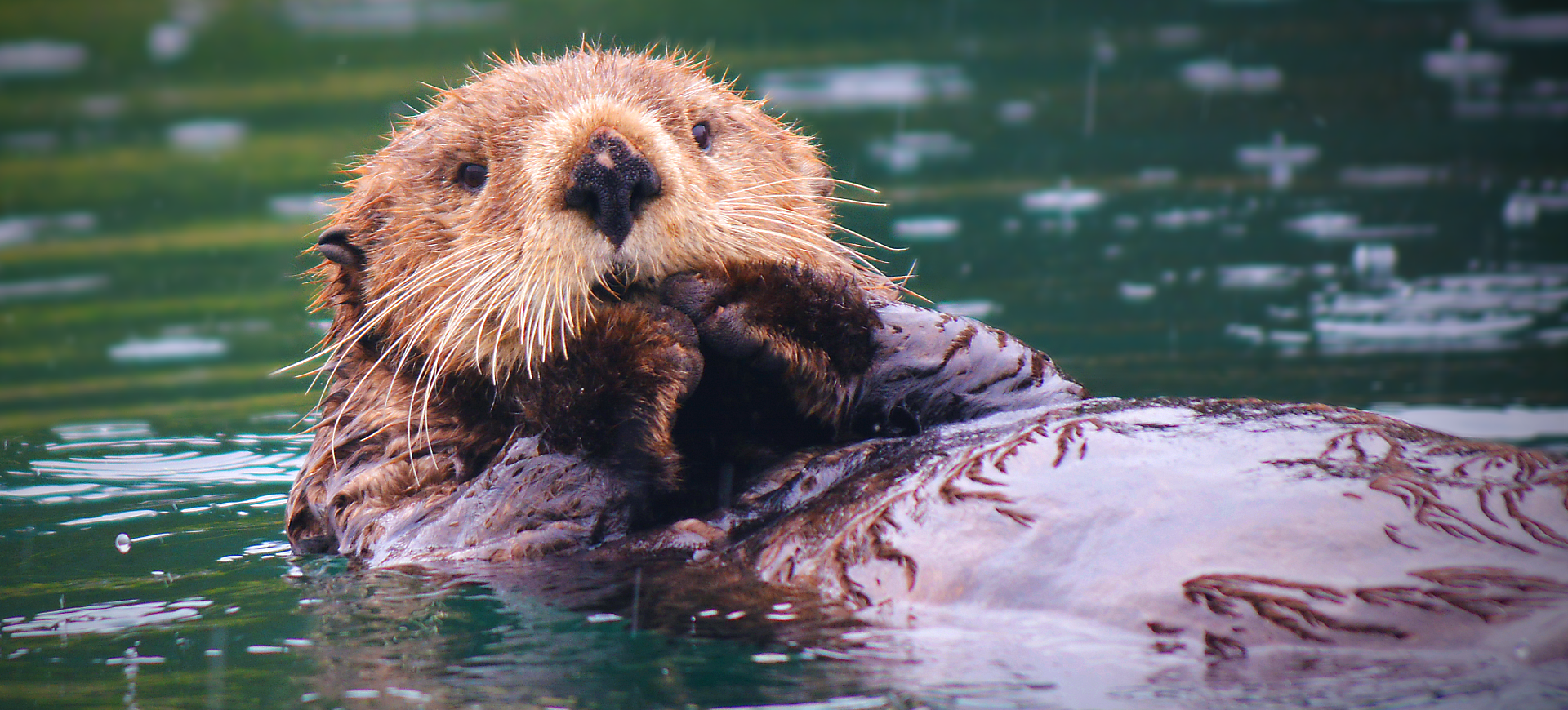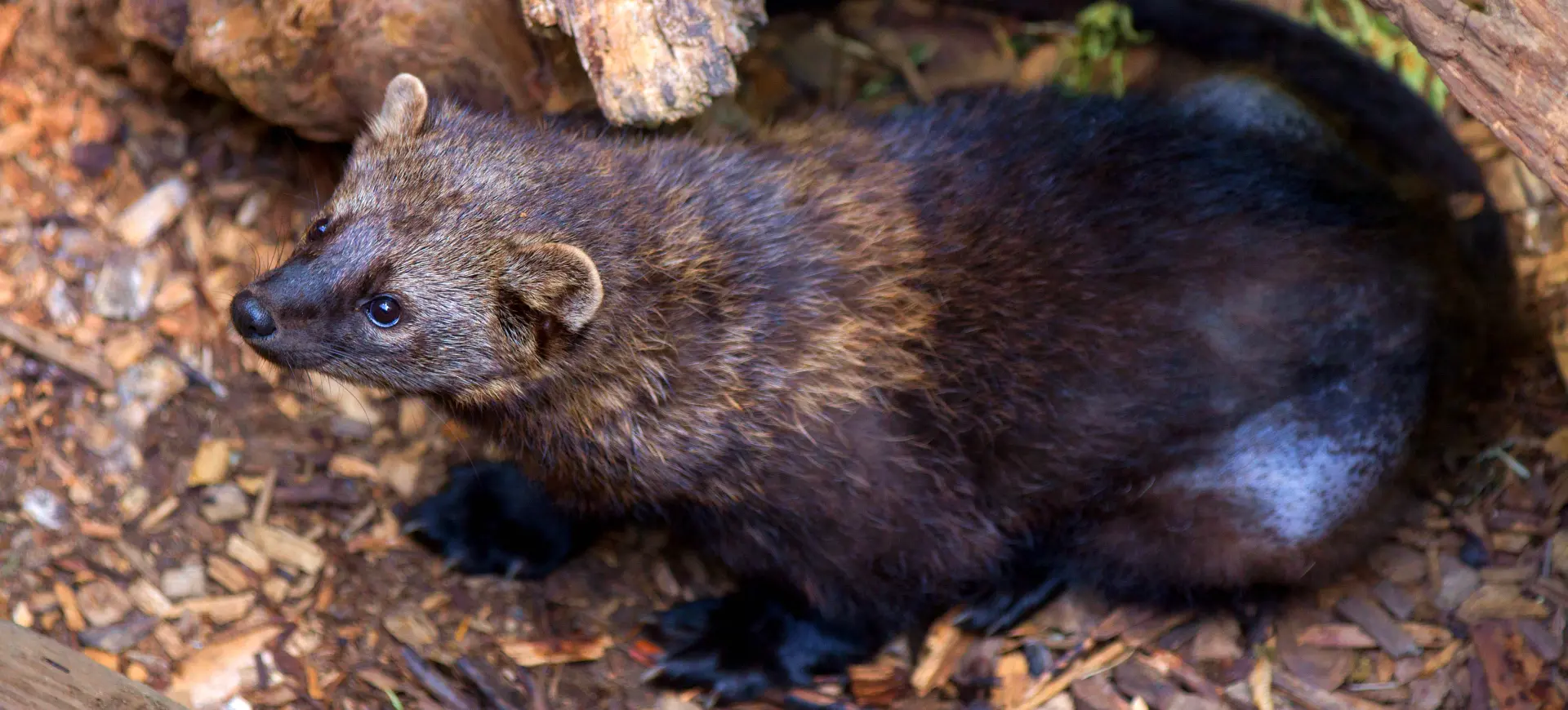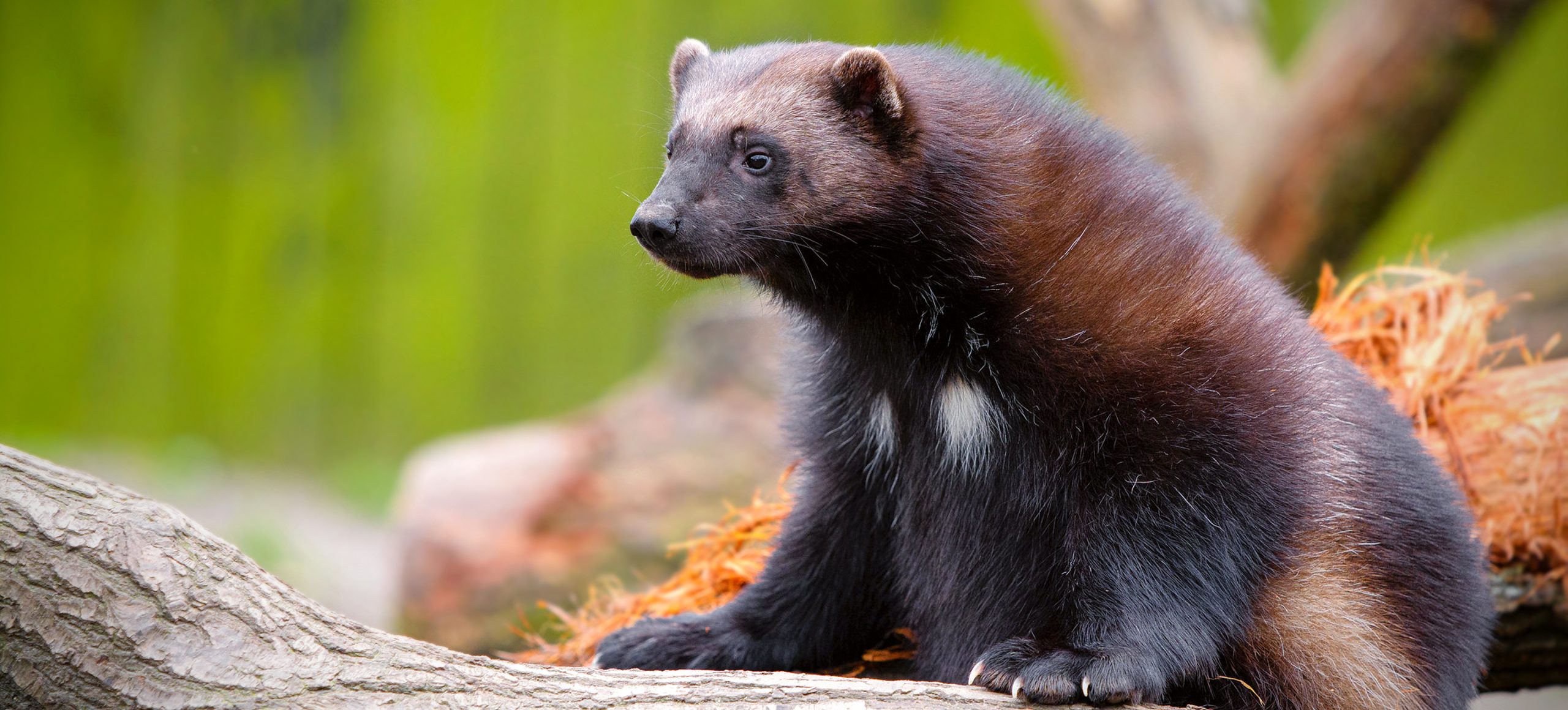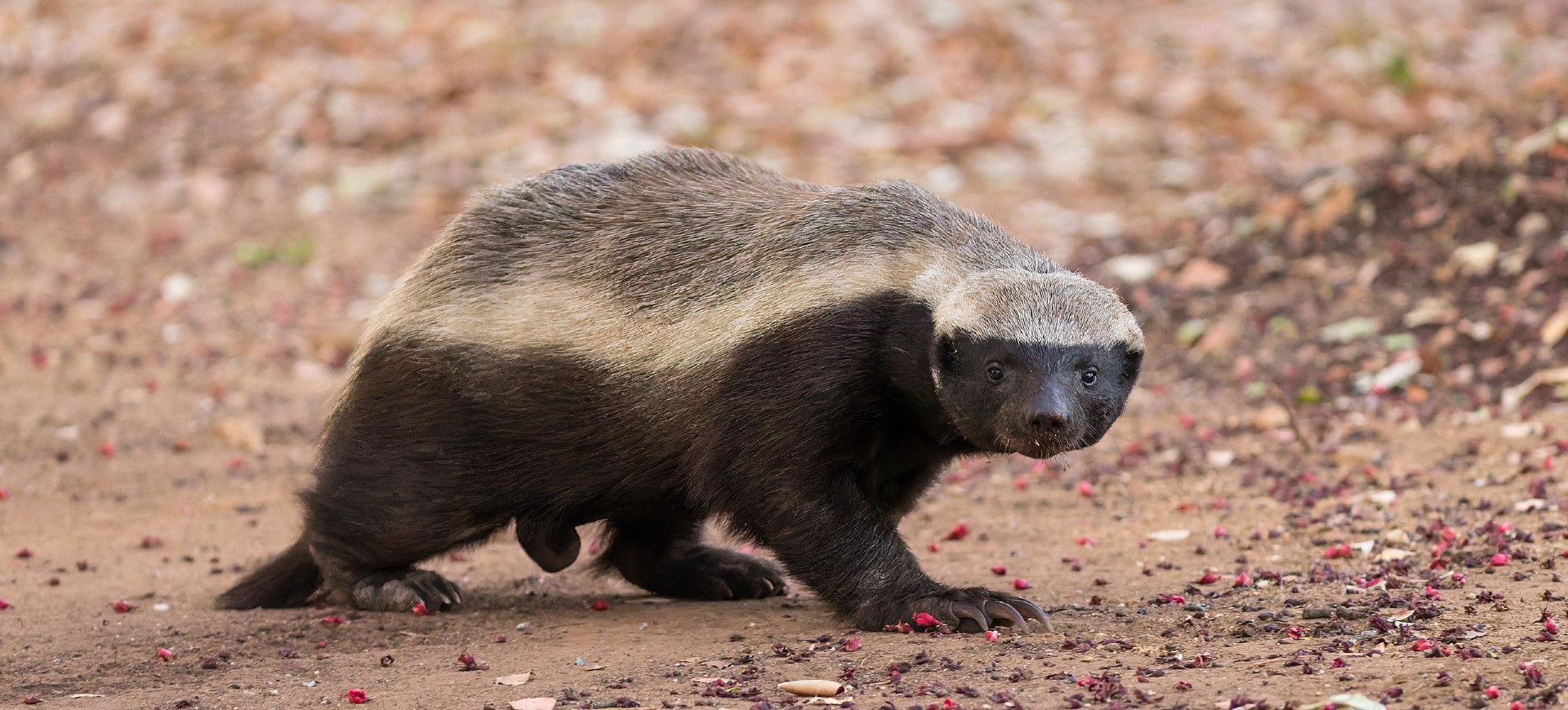Overview
The American Badger (Taxidea taxus) is a North American mammal known for its robust body, broad flat head, short legs, and long, sharp claws. Adapted for burrowing, these animals are primarily nocturnal and spend much of their time underground. Their fur is coarse and ranges from grayish to reddish-brown, with distinctive black and white markings on their face. American Badgers are solitary creatures known for their ferocity when threatened and their ability to dig rapidly when pursuing prey or creating burrows.
These mammals have a varied diet, primarily carnivorous, feeding on rodents, rabbits, insects, and occasionally plant matter. Their powerful forelimbs allow them to excavate burrows in pursuit of ground-dwelling rodents, demonstrating their role as important predators in their ecosystem. American Badgers are known for their unique symbiotic relationship with coyotes, where they sometimes hunt together for mutual benefit. This behavior showcases their adaptability and the complex interactions within their habitats.
Conservation efforts have focused on understanding their habitat requirements and the impact of human activities on their populations. Although adaptable and can live in various environments, habitat loss and fragmentation significantly threaten their numbers. American Badgers are key indicators of healthy ecosystems, and their presence signifies a well-balanced environment.
Taxonomy
Kingdom
Phylum
Class
Order
Family
Genus
Species
Type
Current distribution:
The American badger's range extends throughout western and central North America, from southern Canada to northern Mexico. It is particularly abundant in the Great Plains, where open grasslands and prairies provide ideal conditions for burrowing and hunting. Populations are also found in the deserts of the southwestern United States, as well as parts of the Midwest and the western United States, including California, Colorado, and Montana. Although less common in the eastern United States, the badger's range has expanded slightly into these areas due to habitat changes.
Despite its wide distribution, habitat fragmentation caused by agriculture, urban development, and road construction challenges some local populations. In agricultural areas, badgers are sometimes viewed as pests due to their digging habits, which can damage crops and infrastructure. Nevertheless, the species remains widespread and adaptable, with healthy populations in much of its range. Conservation efforts focus on mitigating human-wildlife conflicts and preserving grassland habitats critical for their survival.
Physical Description:
American Badgers have a distinctive appearance: a low-slung body, broad shoulders, and short, powerful limbs designed for digging. Their coat is predominantly grey, with black patches on their legs and a distinctive black-and-white striped face. Adult badgers are typically about 24 to 30 inches (61 to 76 cm) in length, including a small tail, and weigh between 14 to 19 pounds (6.3 to 8.6 kg), with males being larger than females. The physical adaptations of the American Badger, including its loose skin and muscular build, enable it to twist and turn within confined spaces when pursuing prey underground.
Another key feature is their large, forward-facing claws, measuring up to 2 inches (5 cm) long, perfect for digging through soil and snow. The badger’s coat is thick and coarse, providing insulation and protection from underground life’s elements and struggles. Their eyesight is poor, but this is compensated by highly developed senses of hearing and smell, which are crucial for detecting prey underground. American Badgers change their coat seasonally, with a thicker, longer coat in winter for warmth.

Lifespan: Wild: ~5 Years || Captivity: ~10 Years

Weight: Male: 16-24 lbs (7.3-10.9 kg) || Female: 14-19 lbs (6.3-8.6 kg)

Length: Male: 24-30 in (61-76 cm) || Female: 22-28 in (56-71 cm)

Top Speed: 19 mph (30 km/h)
Characteristic:
Native Habitat:
The American Badger is native to North America, with a range extending from central Canada through the western and central United States into northern Mexico. It inhabits various environments, from dry prairies, grasslands, forest edges, and mountainous areas. Their burrowing lifestyle, which allows them to create dens in various soil types, facilitates their adaptability to different habitats.
These animals prefer open areas with loose soil that is easy to dig, such as prairies and farmlands, where they can more easily hunt for burrowing rodents. Their burrows, which they excavate themselves, serve multiple purposes: shelter from the elements, protection from predators, and a place to rear their young. The structure and depth of these caves can vary greatly, depending on the terrain and the badger’s specific needs.
Climate Zones:
Biomes:
Biogeographical Realms:
Continents:
Countries:
Diet:
Diet & Feeding Habits:
The American Badger’s diet is varied and largely carnivorous, reflecting their role as opportunistic predators. They primarily consume small to medium-sized mammals, including ground squirrels, moles, prairie dogs, and rabbits. Insects, reptiles, and amphibians also constitute a significant part of their diet, alongside occasional consumption of plant materials such as fruits and grains.
Their hunting strategy involves using their powerful claws to dig into the burrows of ground-dwelling rodents, showcasing their specialized burrowing abilities. American Badgers hunt day and night, depending on prey availability and environmental conditions. They possess a keen sense of smell, which they use to detect prey underground before swiftly digging to capture it. In some regions, they are observed hunting in tandem with coyotes, a rare example of interspecies cooperation.
Mating Behavior:
Mating Description:
The American Badger exhibits a polygynous mating system, where males may mate with multiple females during the breeding season. Mating typically occurs in late summer or early fall, but implantation can be delayed, with actual gestation starting months later. This strategy aligns the birth of offspring with favorable conditions in spring.
Females give birth to a litter of one to five cubs, usually in a specially prepared burrow. The cubs are born blind and furless, depending entirely on their mother for warmth and nourishment. Maternal care is crucial during the early stages of their life, with the mother providing both food and protection. The young badgers begin to emerge from the burrow after a few months, learning to hunt and forage alongside their mother.
Reproduction Season:
Birth Type:
Pregnancy Duration:
Female Name:
Male Name:
Baby Name:
Social Structure Description:
American Badgers are solitary animals. Individuals occupy large territories that they defend from others of the same sex. Their social interactions are limited, primarily occurring during the breeding season. Despite their solitary nature, they may share overlapping territories with individuals of the opposite sex.
The territories are marked with scent marks, which communicate the presence and reproductive status of the badger to others. Badgers create burrows and dens within their territories, which serve as resting places and shelters. Their solitary lifestyle is believed to be an adaptation to their low-density prey base, requiring them to range widely in search of food.
Groups:
Conservation Status:
Population Trend:
The American Badger’s population is considered stable in areas where their habitat remains intact and undisturbed. However, in regions where agriculture, urban development, and other human activities have fragmented their environment, populations have experienced declines. Conservation efforts focus on habitat preservation and mitigating the impacts of human activities.
Their solitary nature and wide-ranging habits make precise population estimates challenging. Due to localized declines, American Badgers are considered a species of conservation concern in some areas. Monitoring efforts and conservation programs are crucial for understanding population trends and meeting their habitat needs.
Population Threats:
Habitat loss and fragmentation are the primary threats to the American Badger. Agricultural expansion, urban development, and road construction disrupt their natural habitats, reducing available hunting grounds and burrowing sites. Additionally, due to their burrowing activities, they are often considered pests by farmers, leading to persecution.
Vehicle collisions are a significant mortality factor for badgers, as their nocturnal habits and slow movement make them vulnerable on roads. Pesticide use in agriculture can also impact their prey availability, threatening survival. Conservation strategies must address these threats to ensure the American Badger’s continued presence in North America.
Conservation Efforts:
Conservation efforts for the American Badger include habitat preservation, restoration, and the creation of wildlife corridors to connect fragmented habitats. Legal protections have been established in some regions, regulating trapping and hunting to ensure sustainable populations. Public awareness campaigns aim to reduce human-wildlife conflicts and promote coexistence.
Research into their ecological role and population dynamics is ongoing, providing valuable information for conservation planning. Collaborative efforts between conservation organizations, governmental agencies, and local communities are essential for addressing American Badgers’ challenges and ensuring their long-term survival.
Additional Resources:
Fun Facts
- American Badgers can dig backward at an impressive speed, using their powerful claws to throw soil behind them.
- They have been known to team up with coyotes in hunting, where the badger digs up prey that tries to escape underground, and the coyote catches those that run on the surface.
- Badgers can seal the entrances to their burrows from the inside with dirt to protect against predators and harsh weather.
- Badgers can run up to 19 mph (30 km/h) despite their bulky appearance to escape predators.
- Their loose skin allows them to twist and turn freely in a predator’s grip, making it difficult for them to be held.
- American Badgers have a low reproductive rate, which makes their populations vulnerable to rapid declines.
- They communicate with up to 12 different vocalizations, including growls, hisses, and chirps.
- Badgers are one of the few animals capable of successfully preying on prairie dogs, significantly impacting prairie dog colonies.
- Their burrowing activity benefits the ecosystem by aerating the soil and helping to control rodent populations.
- The American Badger is the state animal of Wisconsin, reflecting its significance and presence in the region’s cultural and natural heritage.

